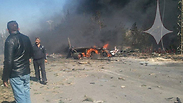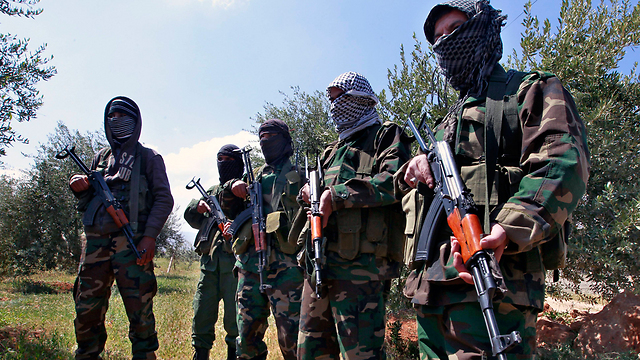
A ticking bomb awaits Israel on its northern border
Analysis: Even if the alleged Israeli strike in Syria destroyed a missile shipment to Hezbollah, it's still a drop in the ocean; the Shiite organization's monstrous weapons arsenal will not be eliminated by occasional surgical strikes.
For example, according to foreign reports, Friday's attack on the Syrian missile depot in the al-Qalamoun area near the Syria-Lebanon border targeted Scud-C missiles. But Hezbollah already obtained the more advanced Scud-D missiles a long time ago.
In recent years, Hezbollah has been emptying out all its Syrian ally's weapons, and with all due respect to Israel's impressive intelligence abilities, there is no way to uncover every single truck crossing the long border between the countries.
The working premise is that Hezbollah is armed from head to toe: From Scud-D missiles which cover every point in the country, through the accurate Fateh-110 missiles with the heavy warheads, the Yakhont anti-ship cruise missiles which reach a range of up to 300 kilometers (186 miles) and can paralyze the Navy's activity and hit strategic points (according to foreign reports, the IDF attacked such a shipment, but other reports indicated that not all missiles were destroyed), aerial defense systems, and of course a stock of some 130,000 rockets reaching different ranges, with an ability to fire 1,500 rockets a day.

If that were not enough, Hezbollah has gotten hold of short-range Burkan rockets from Syria, which can reach up to 7 kilometers but carry warheads of 100 kilograms to half a ton of explosives, and can cause destructive damage.
It's true that Hezbollah is up to its neck in the fighting in Syria with 5,000 of its men, in Iraq and in Yemen. Its fighters are being buried secretly, with the death toll nearing 1,000, in addition to thousands of injured. For an organization of 15,000 regular fighters, that's quite a lot. Hezbollah's offensive initiatives in the Golan Heights, with Iranian help, have been unsuccessful too.
Nonetheless, the challenge posed by Hezbollah is becoming extremely significant, and any attempt to repress it as if it were a Defense Ministry spin is foolish and could even be dangerous. Hezbollah has gained huge fighting experience in major frameworks as an army for all intents and purposes, in firing rockets and missiles and in operating advanced weapons. Only last weekend we were exposed to a drone base it set up, and it has made a significant leap in this field and received unmanned aircraft from Iran.
If we add that to the many weapons it has received, the defense establishment must raise its preparedness level immediately, in light of the gaps exposed in the reserve system and in the regular units' training, speed up the development of the David's Sling defense system and create a considerable and dramatic threat against Hezbollah which will deter it from entering the next conflict.
If the past weekend's operation was painful for Hezbollah, we should not rule out the possibility of retaliation, on Syria's part either. About three months ago, in the attack on Mount Dov, Hezbollah Secretary-General Hassan Nasrallah demonstrated that he has red lines too, and there is basically a deterrence battle taking place here.
This requires high-quality intelligence, technological superiority not only in the air but also on the land, and a lot of training. The ability demonstrated against Hamas last summer will not suffice against Hezbollah. It's true that the IDF has also made a considerable quantum leap from the summer of 2006.
If we only compare the number of targets the Air Force had at the time – a little more than 200 – today it has collected more than thousands, and the intelligence ability has been improved in a way that will even surprise Nasrallah.
But it is still our duty to say that there is a ticking bomb waiting for us on the northern border which requires us to think outside the box. If the defense establishment fails to defuse it, quickly, we are in for a battle which we have never experienced before.










